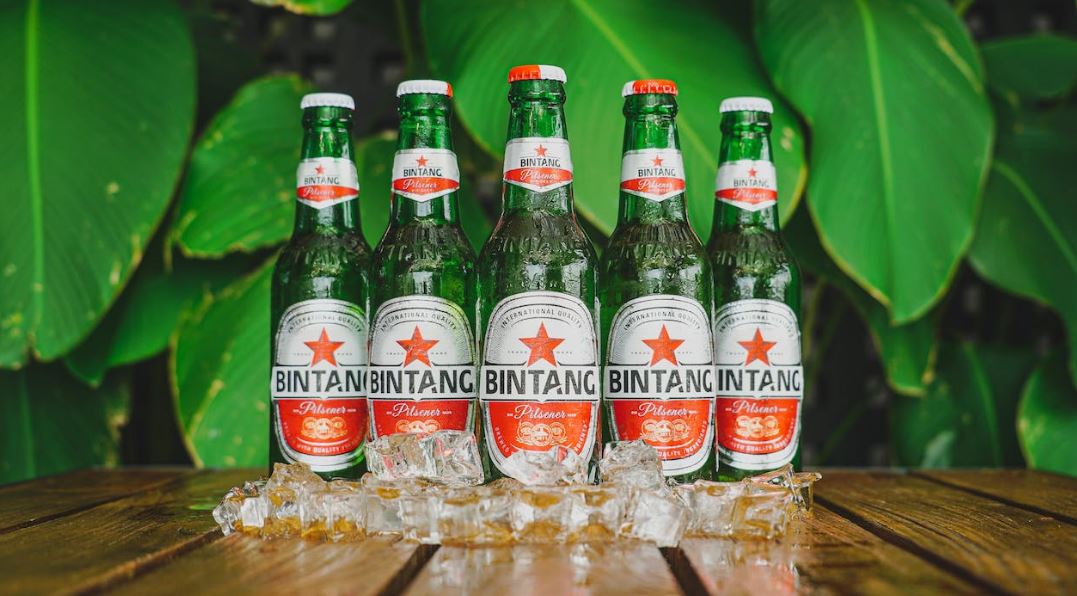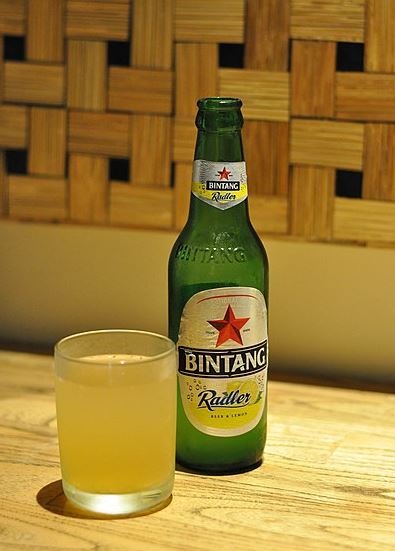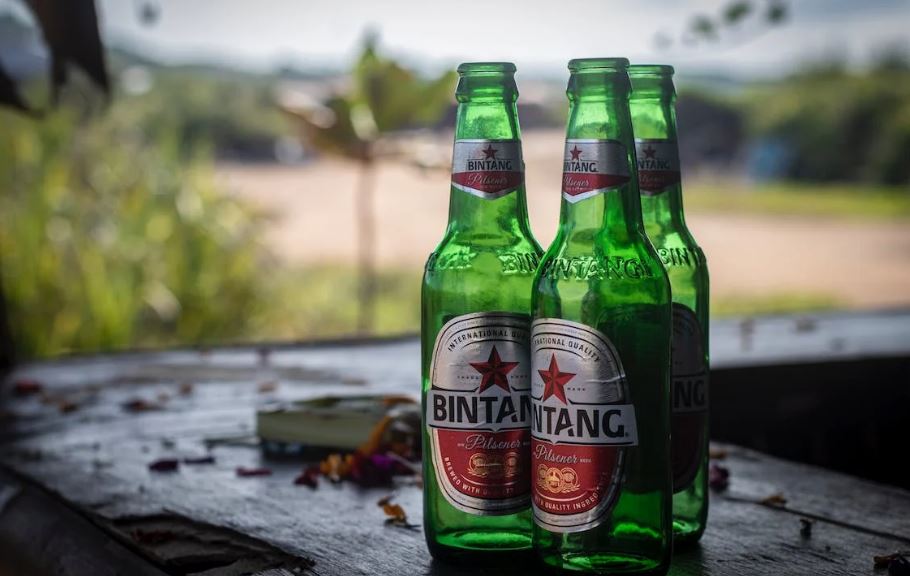Bintang Beer, often known as Bir Bintang (roughly, “Star Beer”), is an Indonesian beer brand made by PT Multi Bintang Indonesia Tbk, a subsidiary of Heineken.
The beer has a gold color and a serving temperature of 7 °C. It is brewed as a pale lager. Malt and hop flavors may be tasted in the 4.7% ABV Pilsner. Because it is a locally produced version of Heineken, its flavor is comparable to Heineken, and the Bintang bottle has a red star that is similar to Heineken’s red star. A malt-based beverage named Bintang Zero 0.0%, a low-alcohol Radler called Bintang Radler 2.0% (available in both lemon and grapefruit flavors), and a soft drink called Green Sands are all produced by Bintang.
During the Dutch colonial era in Indonesia, the brewery’s construction got underway in Surabaya in 1929. The brewery was renamed “Heineken’s Indonesian Brewery Company” in 1949 when Indonesia gained independence. The brewery was taken over by the Indonesian government in 1957, and they kept it for the following 10 years. The brewery, which was called “Multi Bintang Indonesia” afterward, restarted operations under Heineken in 1967.
A gold medal for Lager (Class 2) and Champion Beer for the lager category was awarded to Bintang Beer in 2011 at the Brewing Industry International Awards (BIIA 2011) in London.
The Bir Bintang brand was recognized by Brand Finance as one of the Top 50 Most Valuable Indonesian Brands of 2013.
International Beer of the Week: Bintang
Travelers to Indonesia must try Bir Bintang, the country’s well-known indigenous beer. Bintang has been a national emblem for more than 70 years and is synonymous with Bali beach sunsets and the amazing nightlife of Jakarta. Bir Bintang, which translates to “Star” in Bahasa Indonesia, is a genuine star in the country’s beer market.
Bir Bintang was created as a result of Indonesia’s Dutch colonial past and is currently brewed by Multi Bintang Indonesia (MBI), a Heineken subsidiary (the bottle and label are evocative of a Heineken bottle).
Heineken did not become a significant stakeholder until 1936, despite the company having been founded in 1929 under the name NV Nederlandsch-Indische Bierbrouwerijen. The brewery was renamed “Heineken’s Indonesian Brewery Company” in 1949, when Indonesia gained independence. The business became PT Multi Bintang Indonesia Tbk (MBI) when it went public in 1981.
Bir Bintang, which is Indonesia’s top-selling beer brand and is often sold in 620 ml bottles known to most travelers as “big bintang,” sells more than 1 million hectoliters annually. Bintang is brewed using premium ingredients, including carefully chosen malt, hops, and water, and is made possible by Heineken International. With a 4.8% v/v alcohol concentration, Bintang is classified as a pilsner-style lager beer by the locals as “bir putih.”
The beer will pour out of its sizable green bottle with a modest quantity of white head on a pale-yellow body. Despite the brewer’s claims, this beer tastes more like a light lager. There is some frothy carbonation present when you initially place the glass (or bottle) in your mouth, but it dissipates quite soon. There are the traditional hop and malt flavors along with a little citrus undertone. It starts off sweet before transitioning to a gritty taste with little hop flavors.
Compared to popular European brands, this beer is somewhat below average, but it is still a pleasant aspect of the overall Indonesian experience. On a warm night out in Kuta, Bali, or on the muggy Jakarta city streets, it is very cool.
Interesting History
Beer with the brand name Bir Bintang has its roots in Indonesia. The Dutch-owned Heineken Asia Pacific Brewery, subsequently known as Multi Bintang Indonesia, initially released it in 1929.
Literally meaning “Star Beer” in Indonesian, the drink’s moniker “Bir Bintang” gained popularity there immediately. In the 1930s, the brewery increased the size of its operations, and Bir Bintang spread widely across Indonesia.
The Japanese seized Indonesia during World War II and took over the brewery. After the war, the Dutch reclaimed power and kept making Bir Bintang until 1945, when Indonesia gained independence.
Bir Bintang conducted a rebranding drive and unveiled a new logo with a red star in the 1950s and 1960s. Additionally, the brewery increased the size of its production facilities and started selling Bir Bintang in other Southeast Asian nations.
Multi Bintang Indonesia was bought by Heineken in 1990, and Bir Bintang joined the Heineken family of brands as a result. Bir Bintang is still made in Indonesia today and marketed to other nations.
In Indonesia, Bir Bintang is a well-liked beer that is frequently paired with regional food. Due to the fact that it has come to represent Indonesia’s own culture and heritage, it is also a well-liked option among travelers to the country.



